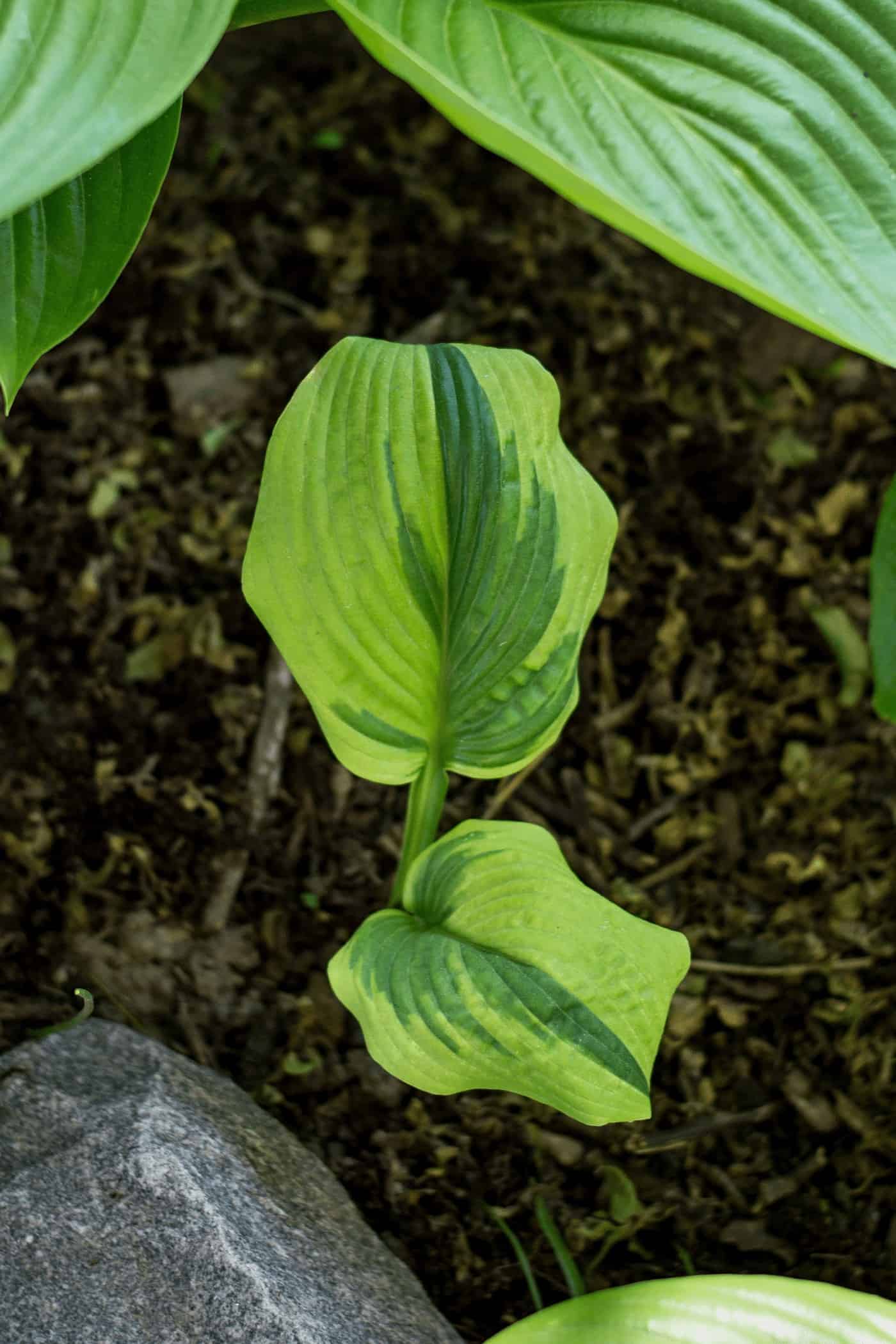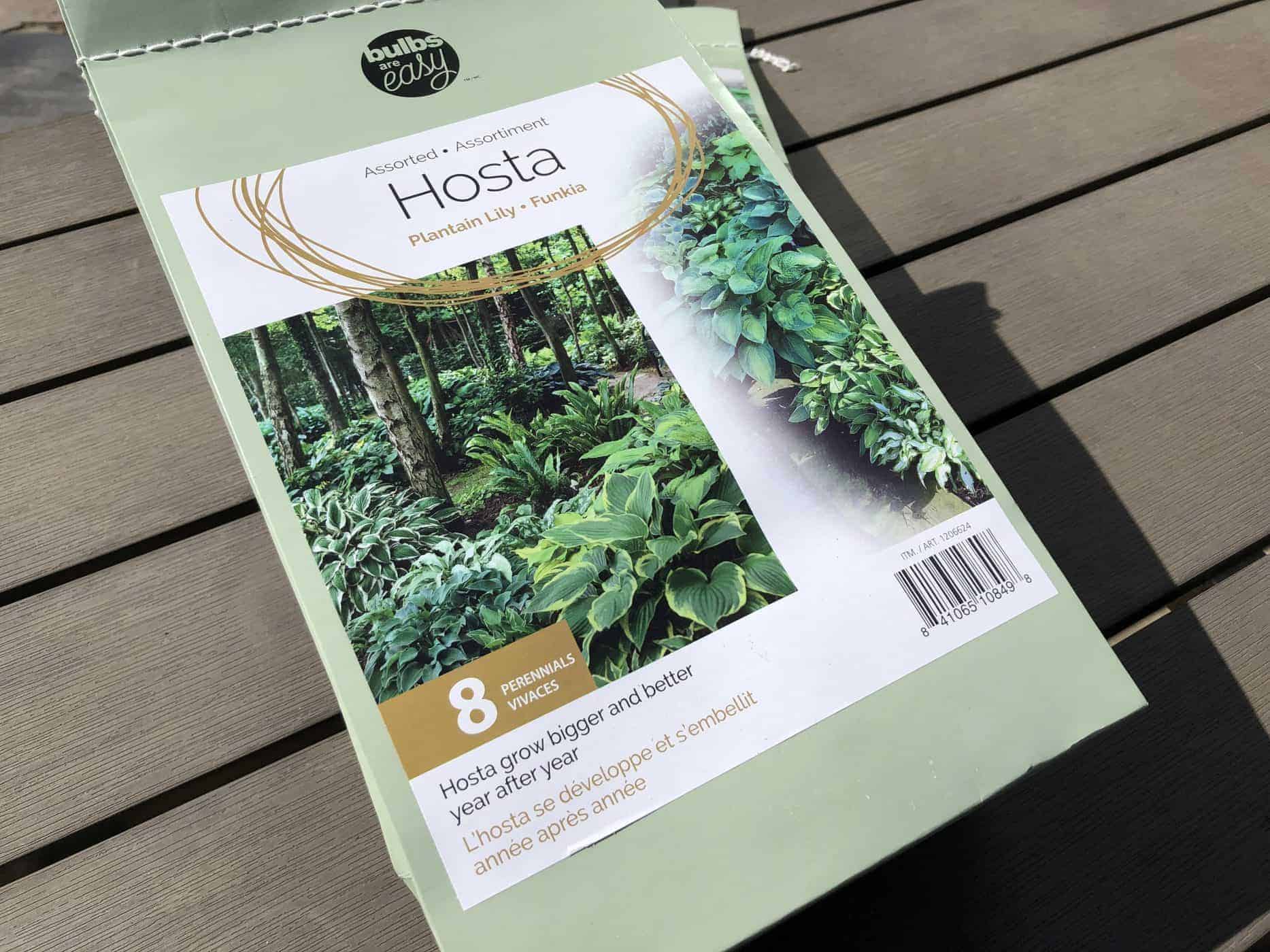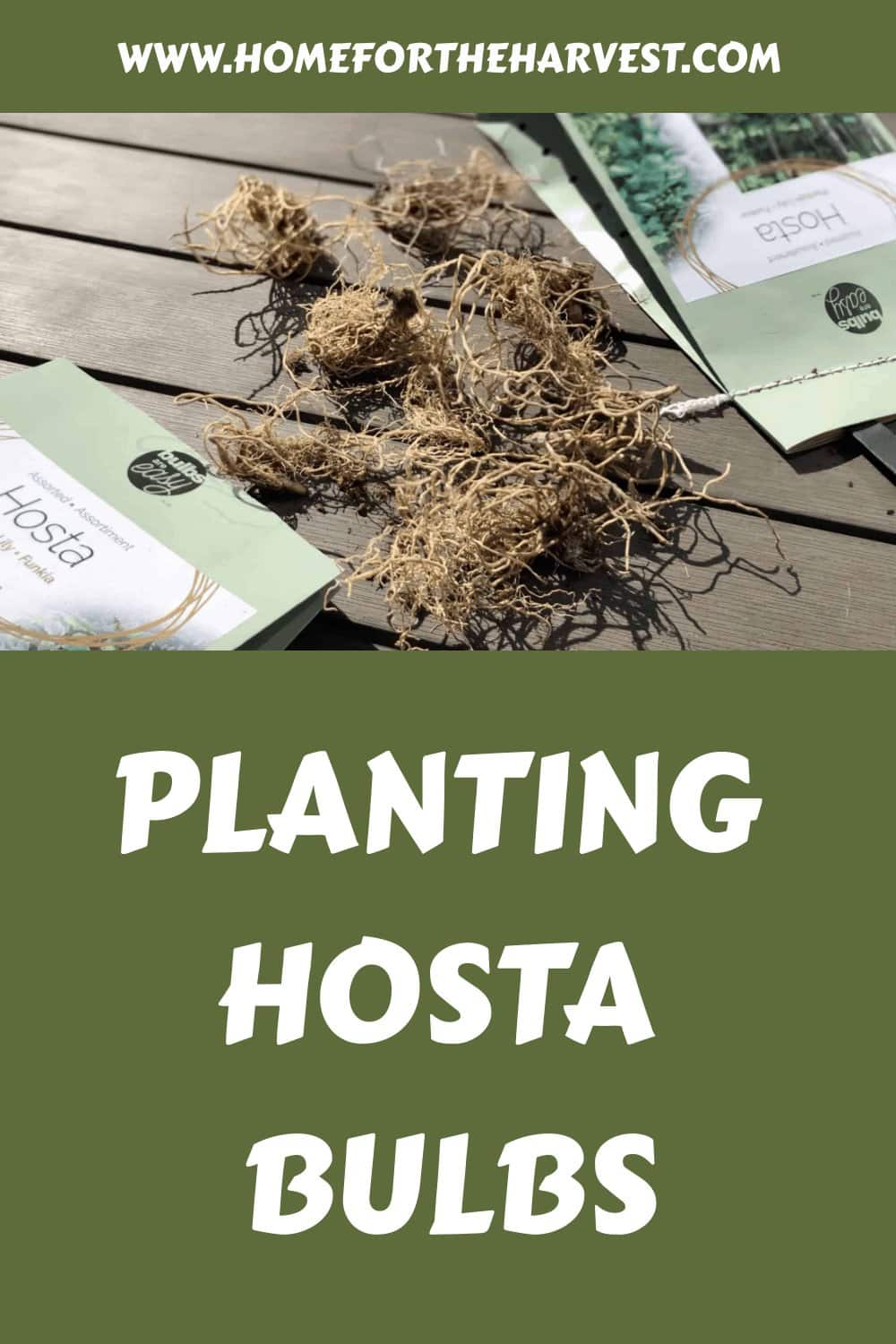Hosta bulbs, or “bare-root” hostas, are dormant hosta plants sold during the offseason. While these roots aren’t technically bulbs in a botanical sense, they are generally sold alongside spring bulbs in garden centers and big box stores. Fortunately, planting them isn’t much more difficult than their potted counterparts sold later in the spring.
How to plant hosta bulbs
Here are the basic steps for planting hosta bulbs (bare-root hostas) in the garden. I also made a video tutorial.
- Find a nice shady spot, preferably with soil that drains well.
- Soak bulbs/roots for 1 hour if the roots are dry or soft.
- Dig a wide hole, about 4 inches deep (not too deep).
- Place the hosta bulb in the center of the hole with the roots at the bottom.
- Spread the roots outwards (like the rays of the sun).
- Gently hold the crown just below surface level.
- Carefully backfill the hole with soil, trying not to leave too many air pockets.
- Check that the crown of the plant (where the roots meet the stems) is at ground level.
- Water after planting to moisten the surrounding soil and help it settle around the hosta roots.
- Add a layer of mulch, like homemade compost, to the soil surface to keep the roots moist and cool.
Once your bare root hosta is planted, you can continue on to follow the general guidelines for growing hostas.
When to plant bare root hostas
Hosta bulbs can be planted in early spring or in the fall (up to a month before the ground freezes for winter). Mail-order hostas are often shipped in the fall, while in-store hosta bulbs are generally stocked at garden centers in early spring. In-store hosta bulbs are sometimes stocked alongside spring-planted flowering bulbs instead of near the potted hostas (although both types of hostas can be planted in a similar manner).
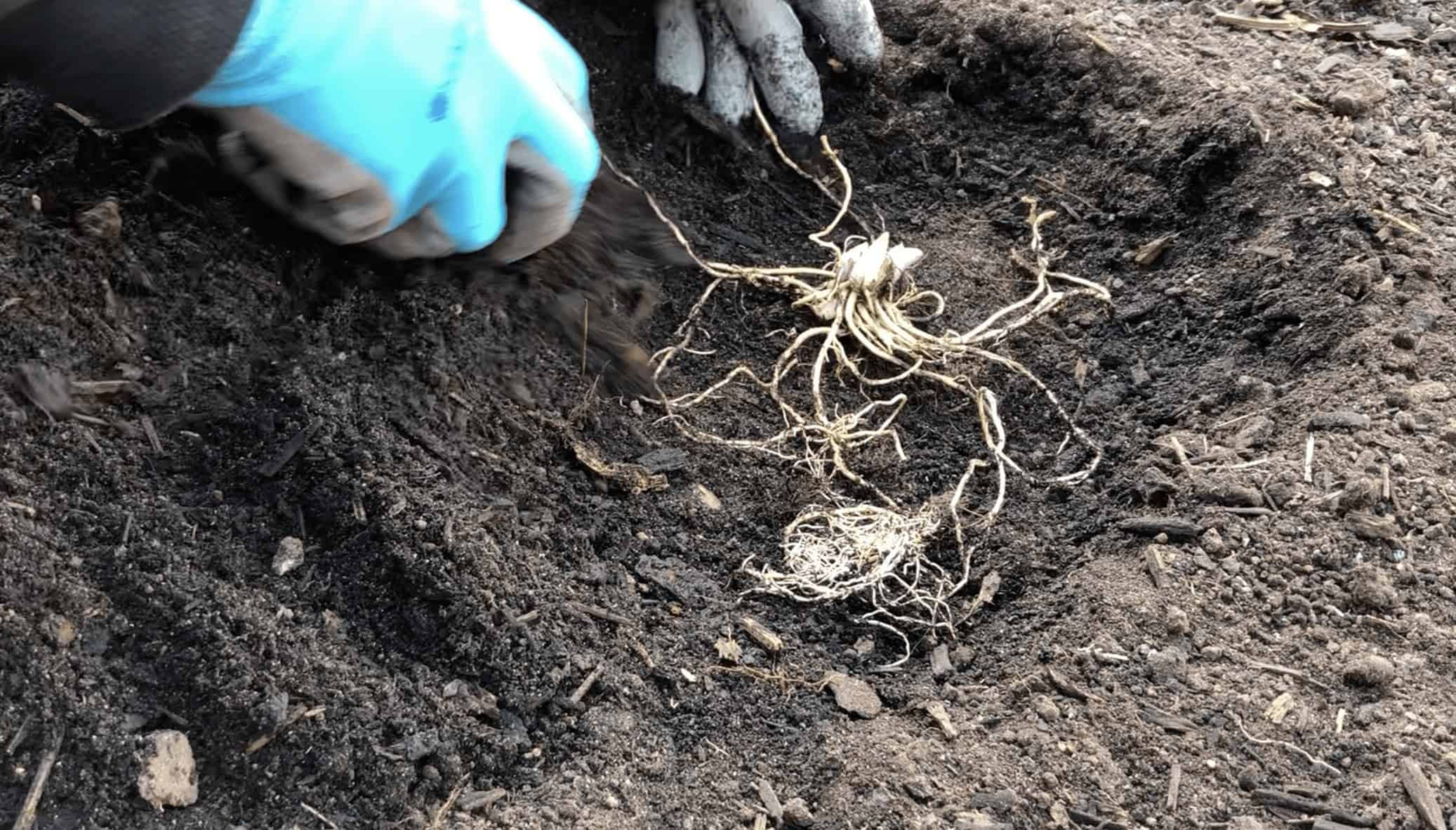
Where to plant hostas in the landscape
Most hostas grow best in the shade. They generally thrive in partial shade, but can also be grown in full shade or even in partial sun. Many hostas can struggle in full sun and are generally reserved for shady spots in the garden landscape. Different varieties/cultivars of hosta differ in their sunlight requirements and tolerances, so look up your variety before planting.
Plant your bare root hostas in soil that drains well. Look for an area with sandy loam soil if possible, and try to avoid planting hostas in areas where water pools, indicating poor drainage. If the soil doesn’t drain well, hostas may be planted in a garden bed that’s slightly raised up above the surrounding area, allowing for drainage. For hostas planted in pots, use well-draining potting soil and look for a planter that includes a drainage hole.
Space bare root hosta bulbs at least a foot apart when planting more than one. The optimal spacing depends on the design of the garden and on the variety of hostas, as some hostas grow much larger than others. Research the mature size of your hosta before choosing a planting site or container. If you don’t know the variety, plant them a couple of feet apart and observe them over the next few years. You can always transplant them if required.
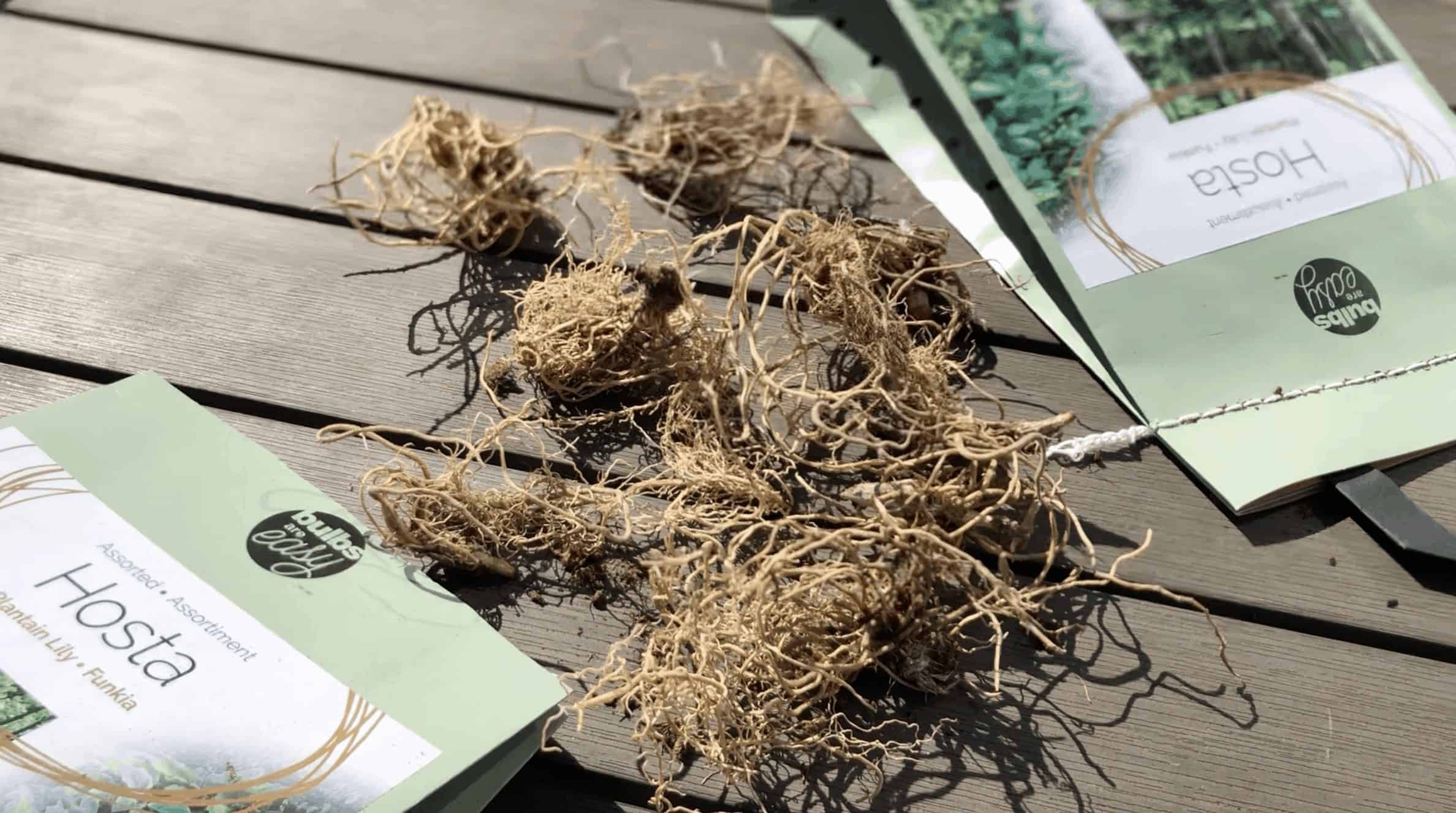
Bare-root hosta plants
Bare root hosta plants are dormant hosta plants that have had the soil washed away from the roots. This leaves only the plant – the roots, the crown, and the little stem buds. Bare root hostas are lighter and cleaner to ship than plants that are potted up in the soil, and they also have a reduced chance of transmitting soil-borne diseases. Bare root hostas are also often much more affordable to purchase than plants that are potted up and sold while the leaves are actively growing.
Hosta bulbs are not true plant “bulbs”, in the sense that they don’t have true bulb protective covering (like a tulip or a daffodil bulb). Because they lack this coating, they can dry out easily and can transplant more easily into the soil if soaked for an hour or two before planting. But even though hosta bulbs are really just bare root plants, they are generally sold alongside flowering bulbs, as they can be packaged and sold in a similar manner.
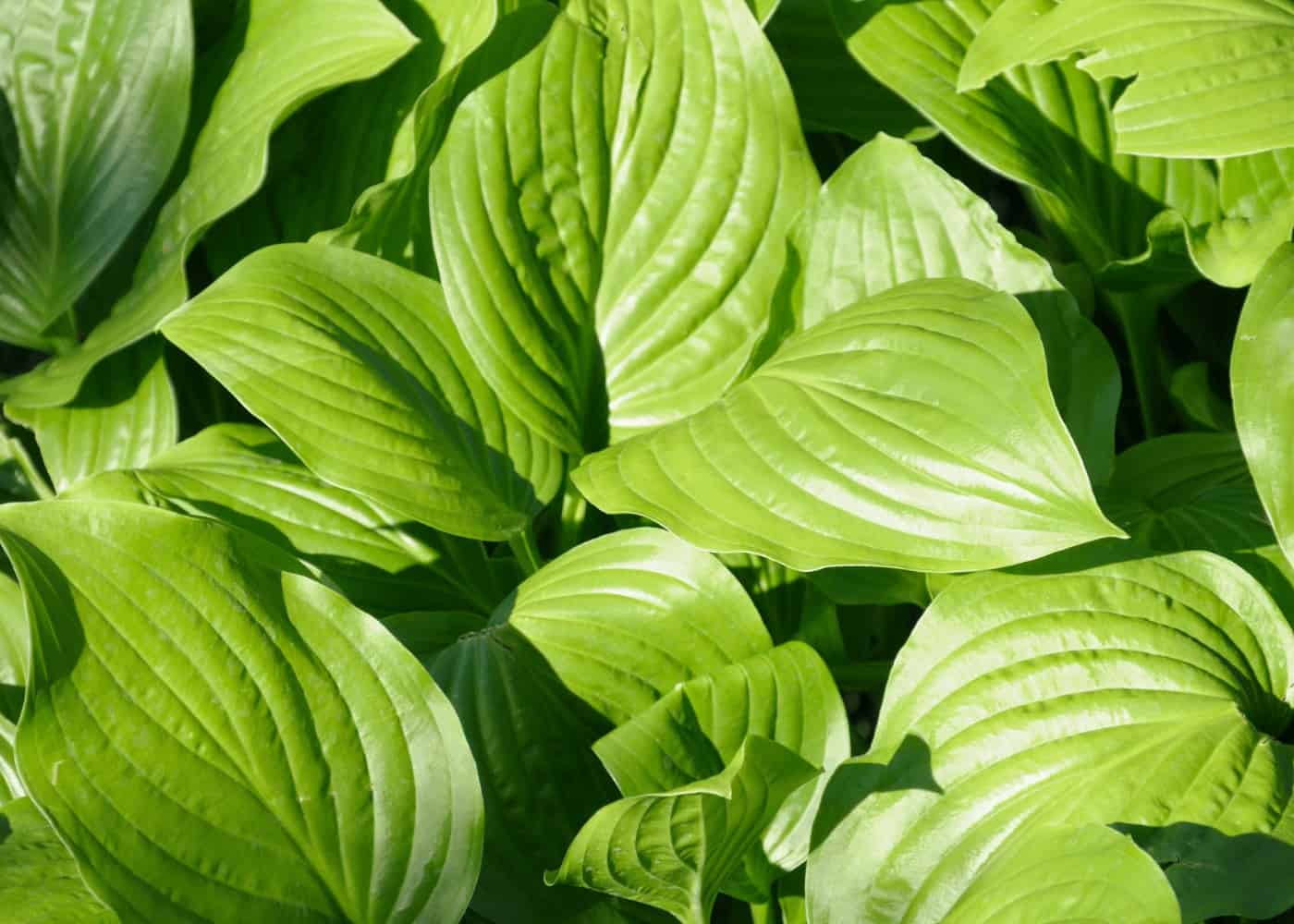
Caring for newly-planted hostas
The most important factor in caring for newly-planted hosta roots is to keep the soil moist (but not wet). This will allow the roots to access the water and the air they need to become established in their new home. Check the soil on a regular basis to see if it is moist. Most hostas can be watered once a week, but they might require more frequent watering in the weeks right after planting and during dry spells as they become established.
Adding quality organic mulch, like homemade compost, can help keep the moisture in the soil by reducing evaporation and keeping the soil cool. The compost will also give the hosta plants a gentle supply of nutrients. Hostas rarely require concentrated fertilizer products and generally grow just fine with an annual application of compost on top of the soil above their roots.
